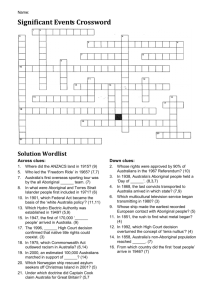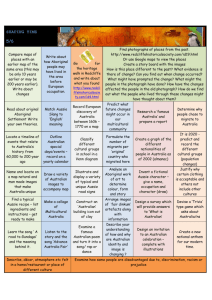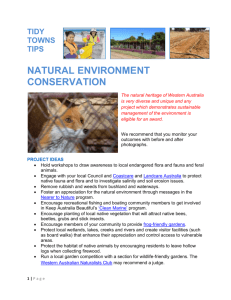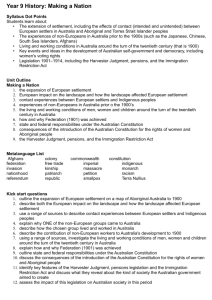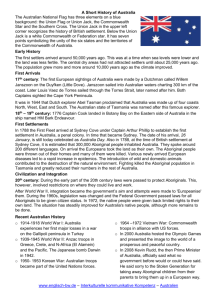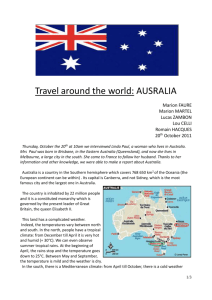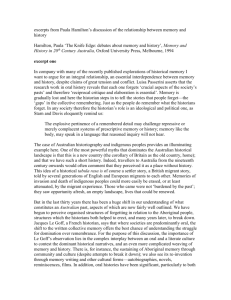9Geog Term1a Overview - Northlakes High School
advertisement
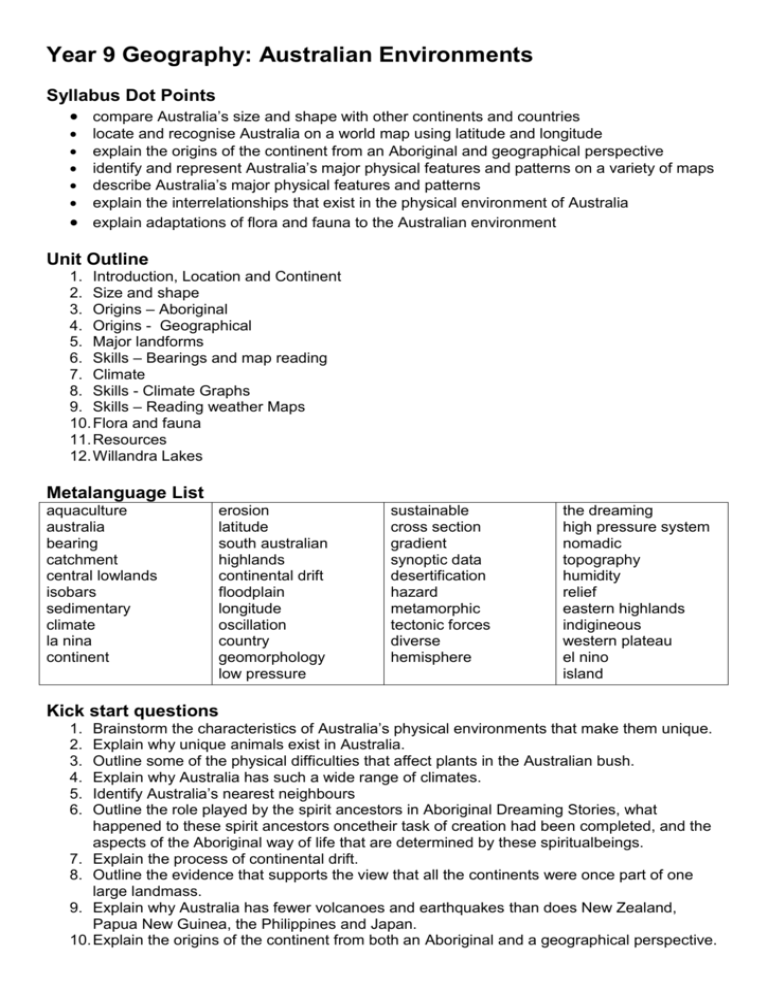
Year 9 Geography: Australian Environments Syllabus Dot Points compare Australia’s size and shape with other continents and countries locate and recognise Australia on a world map using latitude and longitude explain the origins of the continent from an Aboriginal and geographical perspective identify and represent Australia’s major physical features and patterns on a variety of maps describe Australia’s major physical features and patterns explain the interrelationships that exist in the physical environment of Australia explain adaptations of flora and fauna to the Australian environment Unit Outline 1. Introduction, Location and Continent 2. Size and shape 3. Origins – Aboriginal 4. Origins - Geographical 5. Major landforms 6. Skills – Bearings and map reading 7. Climate 8. Skills - Climate Graphs 9. Skills – Reading weather Maps 10. Flora and fauna 11. Resources 12. Willandra Lakes Metalanguage List aquaculture australia bearing catchment central lowlands isobars sedimentary climate la nina continent erosion latitude south australian highlands continental drift floodplain longitude oscillation country geomorphology low pressure sustainable cross section gradient synoptic data desertification hazard metamorphic tectonic forces diverse hemisphere the dreaming high pressure system nomadic topography humidity relief eastern highlands indigineous western plateau el nino island Kick start questions Brainstorm the characteristics of Australia’s physical environments that make them unique. Explain why unique animals exist in Australia. Outline some of the physical difficulties that affect plants in the Australian bush. Explain why Australia has such a wide range of climates. Identify Australia’s nearest neighbours Outline the role played by the spirit ancestors in Aboriginal Dreaming Stories, what happened to these spirit ancestors oncetheir task of creation had been completed, and the aspects of the Aboriginal way of life that are determined by these spiritualbeings. 7. Explain the process of continental drift. 8. Outline the evidence that supports the view that all the continents were once part of one large landmass. 9. Explain why Australia has fewer volcanoes and earthquakes than does New Zealand, Papua New Guinea, the Philippines and Japan. 10. Explain the origins of the continent from both an Aboriginal and a geographical perspective. 1. 2. 3. 4. 5. 6.
